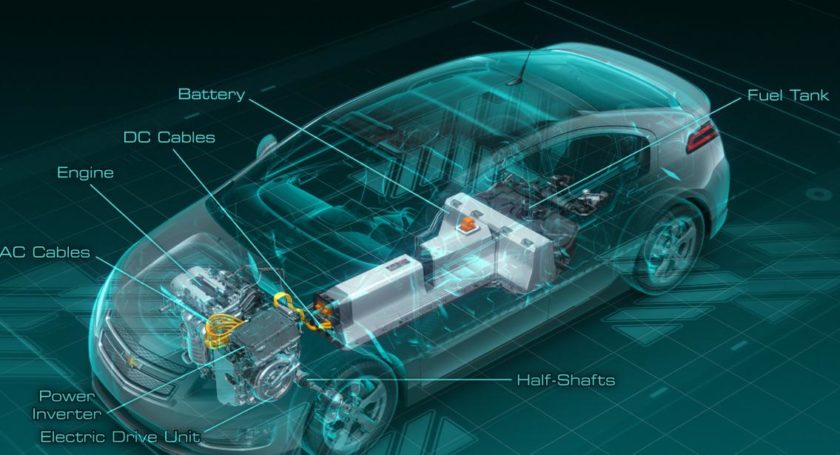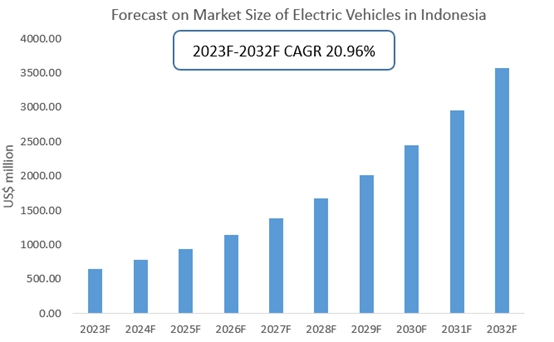New-energy Automobiles being a Development Trend- Review of Guangzhou International Auto Exhibition, 2017
The 2017 Guangzhou International Auto Exhibition was opened in China Import & Export Commodity Trade Fair Pavilion in Guangzhou on November 17, 2017, which lasted for ten days and ended on November 26, 2017. The exhibition was exclusively open to the press on November 17 (Press Day) and exclusively open to professional audience on November 18 and 19 (Professional Audience Days). Ordinary audience and professional audience could visit the exhibition from November 20 to November 26. The entire exhibition covered an area of 220,000 square meters, with items on display covering various types of passenger vehicles, caravans, concept electric vehicles, recreational vehicles, automotive components and parts, automotive new materials, automobile designs and technologies. There were 670,000 audience and 603 exhibitors participating in this exhibition.
According to CRI’ observation on the exhibition, this exhibition set “new technology, new life” as a theme, attracting European, American, Japanese and South Korean automotive groups (e.g. Benz, BMW, Volkswagen, General Motors, Ford, Toyota and Honda) to display their intelligent driving technologies at the forefront. Meanwhile, important domestic automobile enterprises (e.g. FAW, Dongfeng, Changan, SAIC, GAC and Geely) as well participated in this exhibition to present good quality of Chinese-made automobiles. Top premium brands and high-end brands of recreational vehicles continued to take part as manufacturers, forming a luxurious team of exhibitors. Notably, three new brands, Alfa Romeo, LYNK&CO and SWM, were attracted to join in this exhibition. There were 54 new vehicle models in total, not only feasting audience’s eyes but also providing more choices for people with intentions to purchase new vehicles.
With relevant policies continuously published, developing new-energy automobiles, especially electric automobiles, has been a national strategy. China’s central and local governments continue to provide stronger supports for new-energy automobiles. Relevant ministries and commissions issued a few of favorable policies in succession and guaranteed their concrete implementation, which served as a driving force of the development of new-energy automobiles.
Interviews by CRI suggested that the zone of electric automobiles was located in 10.2 and 11.2 zones, which was doubled in size that the previous exhibition, covering an area of 20,000 square meters. Mainstream electric automobile enterprises at home and abroad, including Porsche, Benz, BMW, Audi, General Motors, Volkswagen, Toyota, Renault, DongFeng, Changan, GAC, SAIC, BAIC, BYD, Chery, Geely, Brilliance, Great Wall, JAC, Qichen and Zhidou, all participated in this exhibition with their latest electric vehicle models, displaying more than 60 vehicles and covering mainstream electric vehicles on the market. It is notable that Tesla who was absent from both Chengdu and Shanghai Auto Exhibitions appeared in Guangzhou exhibition with MODEL X and MODEL S equipped with charging interfaces of new national standard. Tesla was reported to reconstruct super-charging piles in super-charging networks in Mainland China in addition to charging piles in destination charging networks, reconstructing them with charging interfaces of “new national standard”. This reconstruction is expected to be completed in spring in 2018. Until now, Tesla has established more than 700 super-charging piles in 170 cities in China and intend to set up over 1,000 super-charging piles by the end of this year.
CRI analyzes that hybrid vehicles will be a mainstream development trend in China’s auto industry in the next 5-10 years. Specifically, accelerating the application of lighter new materials is a significant direction of developing the energy-saving and new-energy auto industry. Zoe, CRI analyst, considers that two factors are primarily attributable to this successful exhibition. The first factor is that the exhibition theme aligns with the industry development trend. The other one is that customers are attaching more importance to Chinese domestic automobile enterprises. Currently, China’s new-energy automobile industry develops at a transitional stage with hybrid vehicles as a mainstream. The sales volume of automobiles increased from 19.31 million in 2012 to 28.03 million in 2016 in China at a CAGR of approximately 9.8%. In terms of new-energy automobiles, the sales volume of hybrid vehicles and battery electric vehicles increased from 13,000 in 2012 to 507,000 in 2016, representing a CAGR of 150%. However, China’s new-energy automobile market exhibits some problems. For example, there is a shortage in supportive infrastructures like charging stations and sales increase is mainly driven by government subsidies. CRI recommends that automobile enterprises should speed up the layout of supportive industries (e.g. charging facilities) along with promoting new-energy automobiles with high cost performances. Only when promoting the development of the new-energy automobile industry from a market aspect, the era of new-energy automobiles will indeed approach.
Related reports:
Research Report on Electric Vehicle Industry in China, 2017-2021
It hopes that electric vehicles and plug-in hybrid electric vehicles will have occupied one fifth (approximately 7 million) of the automobile sales volume in China by 2025. The government also requires that 8% of vehicles sold in China should be electric vehicles in 2018.
Research Report on Automotive Wiring Harness Industry in China, 2017-2021
The development of China’s automobile industry also promotes the development of domestic automotive wiring harness enterprises.
Research Report on Auto Glass Industry in China, 2018-2022
In 2016, the production volume of new automobiles reached 28.12 million, accounting for 29.6% of global production volume. In the same year, the automobile reserve volume was about 193 million in China, accounting for 14.5% of global reserve volume.
Research Report on Automobile Air Bag Industry in China, 2018-2022
CRI market research indicates that the installation rate of air bags has exceeded 70% in 2017, even for those automobiles that are sold at prices of approximately USD 10,000. In 2017, the market value of China’s air bag industry has exceeded CNY 10 billion (USD 1.5 billion).
Research Report on China’s Automobile Wheel Hub Industry, 2018-2022
Analyzed by CRI, the production volume of passenger vehicles increased from 15.52 million to 24.42 million in China from 2012 to 2016, with a CAGR approaching 12%.
Research Report on Tire Steel Cord Industry in China, 2018-2022
Analyzed by CRI, the production volume of steel cord exceeds 2 million tons in China in 2017, representing over 60% of the global production volume. The single use of steel cord limits its application only to the production of radial tires.



